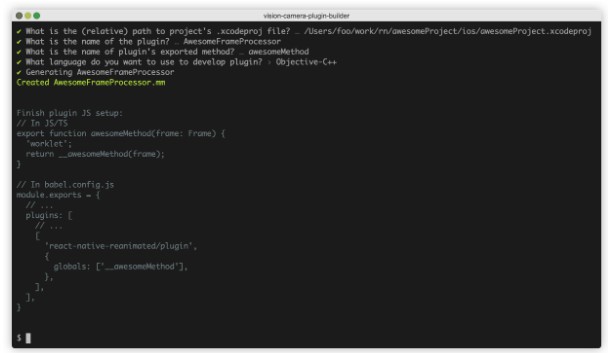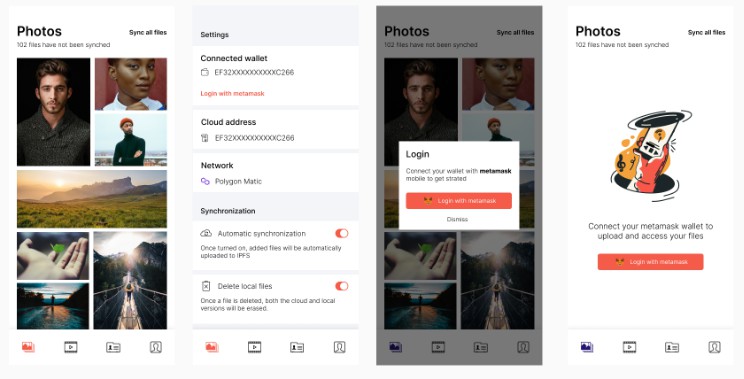Vision Camera Plugin Builder
Create Vision Camera plugin native boilerplate in a few seconds
? How it works
Library use case
For vision-camera-<pluginName>, it generates:
- Android – inside Android source set:
├── android/src/main/<packageName> │ ├── <pluginName> │ ├── ├── <pluginName>Plugin.(java|kt) │ ├── <pluginName>PluginPackage.(java|kt) - iOS – inside iOS library’s source code folder:
├── ios │ ├── <pluginName> │ ├── ├── <pluginName>Plugin.(m|mm) │ ├── ├── <pluginName>Plugin.Swift (if Swift selected) │ ├── <projectName>-Bridging-Header.h (if Swift selected & no bridging header specified)
Application use case
For local usage inside application, it generates:
- Android – inside Android source set:
├── android/src/main/<packageName> │ ├── <pluginName> │ ├── ├── <pluginName>Plugin.(java|kt) │ ├── ├── <pluginName>PluginPackage.(java|kt) - iOS – inside iOS library’s source code folder:
├── ios │ ├── <pluginName> │ ├── ├── <pluginName>Plugin.(m|mm) │ ├── ├── <pluginName>Plugin.Swift (if Swift selected) │ ├── <projectName>-Bridging-Header.h (if Swift selected & no bridging header specified)
? Usage
⚠️ To generate ios boilerplate, you must first install xcodeproj gem
npx vision-camera-plugin-builder ios
npx vision-camera-plugin-builder android
After generating native files, cli will output additional info like suggested JS setup, or Android package manual linking info
⚙️ Options
| Flag | Input | Description |
|---|---|---|
| –projectPath (iOS only) | [string] | Path to .xcodeproj file |
| –manifestPath (Android only) | [string] | Path to project’s Android Manifest file |
| –pluginName | [string] | Name of the plugin |
| –methodName | [string] | Name of plugin’s exported method |
| –lang | [choices] | “Kotlin” or “Java” for Android & “Swift” or “ObjC” or “ObjCPP” for iOS |
License
MIT




